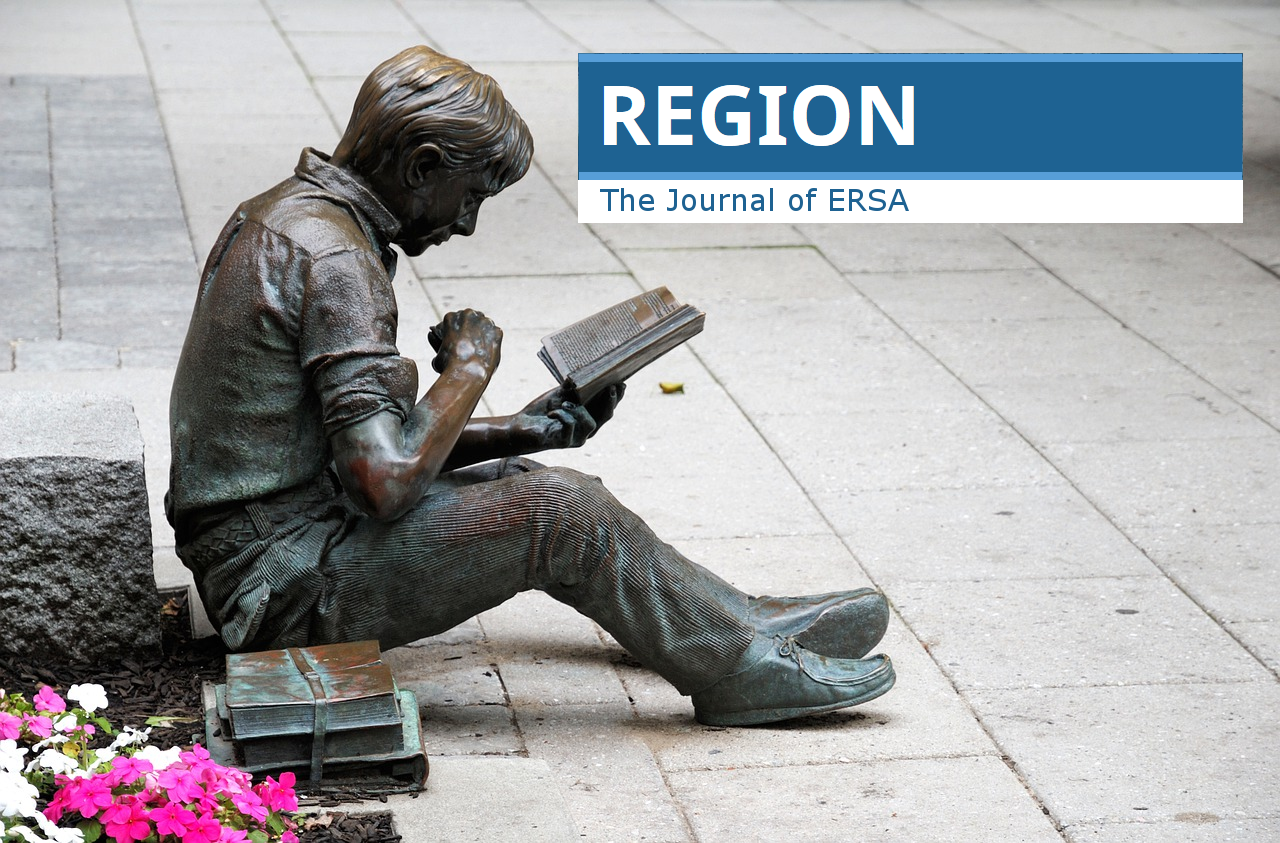Analysing Higher Educational Institutions' Role in Fulfilling their Third Mission
DOI:
https://doi.org/10.18335/region.v8i1.329Abstract
The transitional role of higher educational institutions encourages attention to initiatives aimed at positioning these institutions as hubs of knowledge production and transfers capable of influencing regional development. Nonetheless, the literature has defied the extent to which these institutions have well-embraced their third mission of impacting regional development, thus calling for further approaches in examining the role of these institutions. This paper evaluates the various ways higher educational institutions have embraced their third mission of contributing to regional development. We sourced data containing information from 164 Higher Education Institutions (HEIs) located across the United Kingdom employing the propensity score matching estimation model. The results of the Average Treatment Effects (ATE) highlight the additionality effects of HEIs on graduate support, attracting inward investment, R&D collaborations and network facilitation. Surprisingly, our results emphasis the lack of significance in HEIs role in supporting SMEs, and knowledge exchanges. The main implication relates to the challenges in adopting initiatives that proved successful in specific universities to other higher educational settings.

Downloads
Published
How to Cite
Issue
Section
License
REGION is an open journal, and uses the standard Creative Commons license: Copyright We want authors to retain the maximum control over their work consistent with the first goal. For this reason, authors who publish in REGION will release their articles under the Creative Commons Attribution license. This license allows anyone to copy and distribute the article provided that appropriate attribution is given to REGION and the authors. For details of the rights authors grant users of their work, see the "human-readable summary" of the license, with a link to the full license. (Note that "you" refers to a user, not an author, in the summary.) Upon submission, the authors agree that the following three items are true: 1) The manuscript named above: a) represents valid work and neither it nor any other that I have written with substantially similar content has been published before in any form except as a preprint, b) is not concurrently submitted to another publication, and c) does not infringe anyone’s copyright. The Author(s) holds ERSA, WU, REGION, and the Editors of REGION harmless against all copyright claims. d) I have, or a coauthor has, had sufficient access to the data to verify the manuscript’s scientific integrity. 2) If asked, I will provide or fully cooperate in providing the data on which the manuscript is based so the editors or their assignees can examine it (where possible) 3) For papers with more than one author, I as the submitter have the permission of the coauthors to submit this work, and all authors agree that the corresponding author will be the main correspondent with the editorial office, and review the edited manuscript and proof. If there is only one author, I will be the corresponding author and agree to handle these responsibilities.




